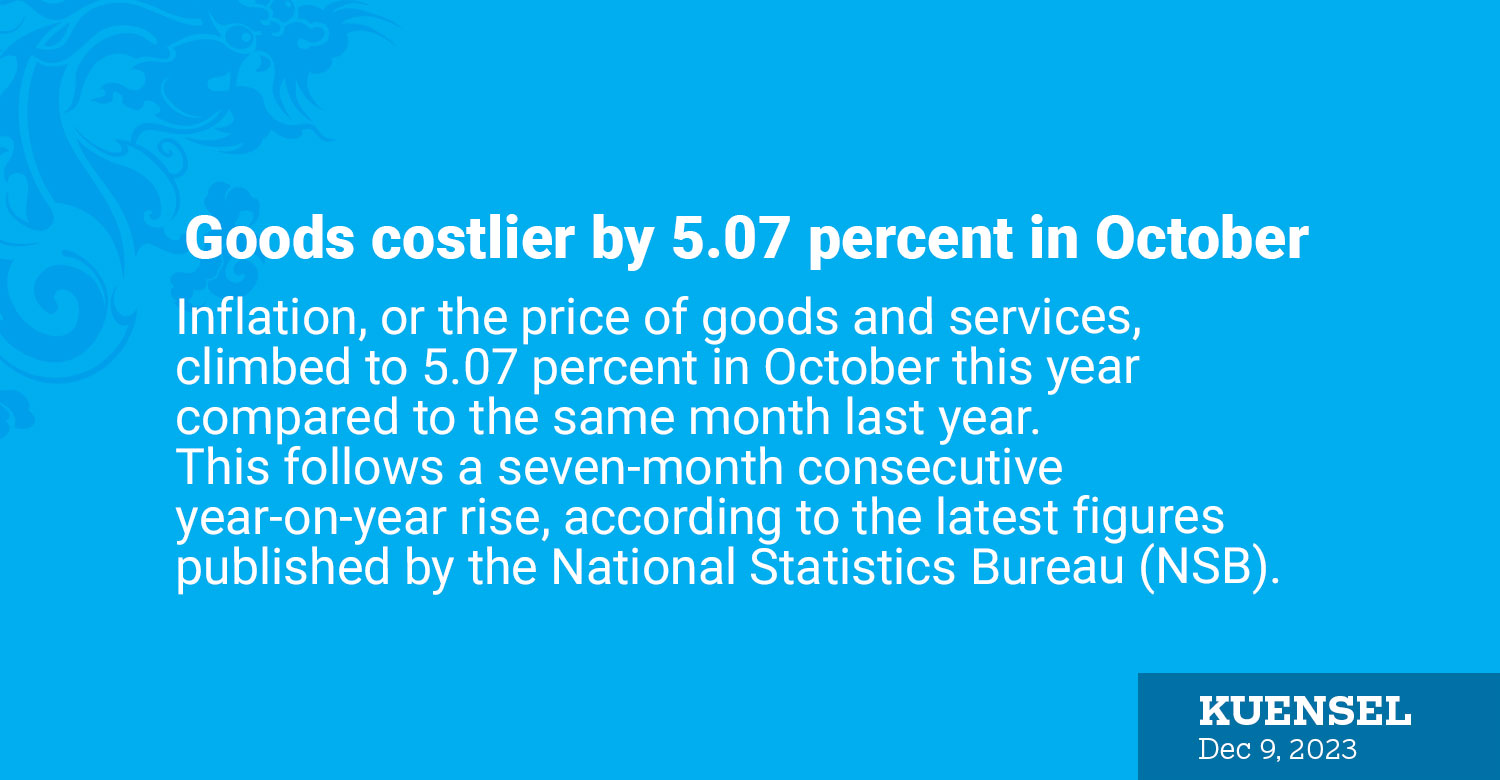… marks seven-month consecutive increase
Thukten Zangpo
Inflation, or the price of goods and services, climbed to 5.07 percent in October this year compared to the same month last year.
This follows a seven-month consecutive year-on-year rise, according to the latest figures published by the National Statistics Bureau (NSB).
Last year’s inflation, measured in the consumer price index (CPI), reached its peak at 6.61 percent in July, while the lowest point was observed at 3.12 percent in March this year.
Despite October’s CPI remaining below the Royal Monetary Authority’s upper tolerance limit of 6 percent, the impact of the purchasing power of individuals is a growing concern.
The purchasing power of Ngultrum, as measured by CPI, stood at Nu 57 as of October this year, compared to December 2012. It means that Nu 100 in October this year is now worth only Nu 57 at December 2012 prices, seeing a decrease of 4.82 percent.
Higher food prices at 5.25 percent and non-food prices at 4.91 percent contributed to the rise in the price of goods and services in October this year. Food and beverages constitute 45.95 percent while non-food constitutes 54.05 percent of the weight in the CPI basket.
In the food category, prices of food and non-alcoholic beverages increased by 5.19 percent, and alcoholic beverages and betel nuts by 6.04 percent.
Similarly, in the non-food category, health prices saw an increase by 13.47 percent, followed by housing and utilities, which rose by 9.58 percent.
At the same time, prices of clothing and footwear increased by 7.03 percent, restaurants and hotels and furnishings and household equipment prices by 4.95 percent and 4.7 percent respectively. While education and transport increased by 2.44 percent and 1.71 respectively.
However, only communication prices saw a drop by 2.86 percent.
Compared with September’s CPI, the cost of goods and services in October has increased by 0.67 percent, with both food and non-food prices rising by 0.04 percent and 1.20 percent, respectively.
At the same time, transport prices increased by 2.84 percent, and furnishings, household equipment, and routine household maintenance increased by 2.19 percent.
Conversely, the food and non-alcoholic prices saw a decrease of 0.03 percent, communication dropped by 2.9 percent, and restaurants and hotels down by 0.29 percent.
Comparing year-on-year between 2022 and 2021, the prices of household goods and services increased by 5.64 percent in 2022. This was a drop of 1.71 percentage points compared to 7.35 percent in 2021.
According to the NSB, the lower rate was because of the slower increase in food items by 3.95 percent last year compared to 9.38 percent increase in 2021.
In 2022, food prices contributed about 34 percent and non-food at 66 percent of the total increase. Conversely, food prices were the main driver of the inflation contributing to almost 60 percent of the total increase in 2021.
Food and alcoholic beverages contributed to about 34 percent of the total inflation increase, transport to about 33 percent, and clothing and footwear to about 13 percent of the increase in 2022.


